How to make sure that a company utilizes its available resources wisely so that they are productive but aren’t overloaded? How to minimize downtime, and get the chance to increase a project’s profitability? One of the things that makes this possible is measuring and monitoring the resource utilization rate.
What is this indicator about? How to ensure an optimal utilization rate from the initial project stages? Let’s delve into these and other issues.
What is resource utilization and why is it important?
Resource utilization is one of the most essential KPIs that project-based organizations should track – it gives them an idea of how efficiently they use the available resources and how productive their employees are.
By definition, resource utilization is the percentage of time team members spend on billable tasks in relation to their available hours [1]. Billable tasks are those that have a direct relation to the project that employees are working on, while non-billable work involves meetings, training, paperwork, etc.
Resource utilization is calculated with the following formula:
Resource Utilization = (Billable Hours / Available Working Hours) x 100
The result shouldn’t be 100% – it will indicate that the team members have too much on their plates. The optimum level of resource utilization is around 80% – in this case, people will have a manageable workload and their efficiency will be high.
Why track resource utilization?
Basically, measuring and tracking resource utilization facilitates more efficient management of project resources and contributes to higher productivity. Here are the other benefits:
- It helps detect inefficiencies and take timely measures to fix the situation.
- It gives the idea of the most demanded roles in a company.
- It facilitates making the best of the available resources.
- It prevents team members from overload and burnout.
- It facilitates the optimization of project costs and can increase a project’s profitability.
- It helps plan future projects.
Finally, if you regularly track resource utilization and optimize it when necessary, it will contribute to more fruitful delivery of projects and increase business success.
Let’s now consider how you can ensure optimal resource utilization from the initial project stages.
5 steps to optimize resource utilization
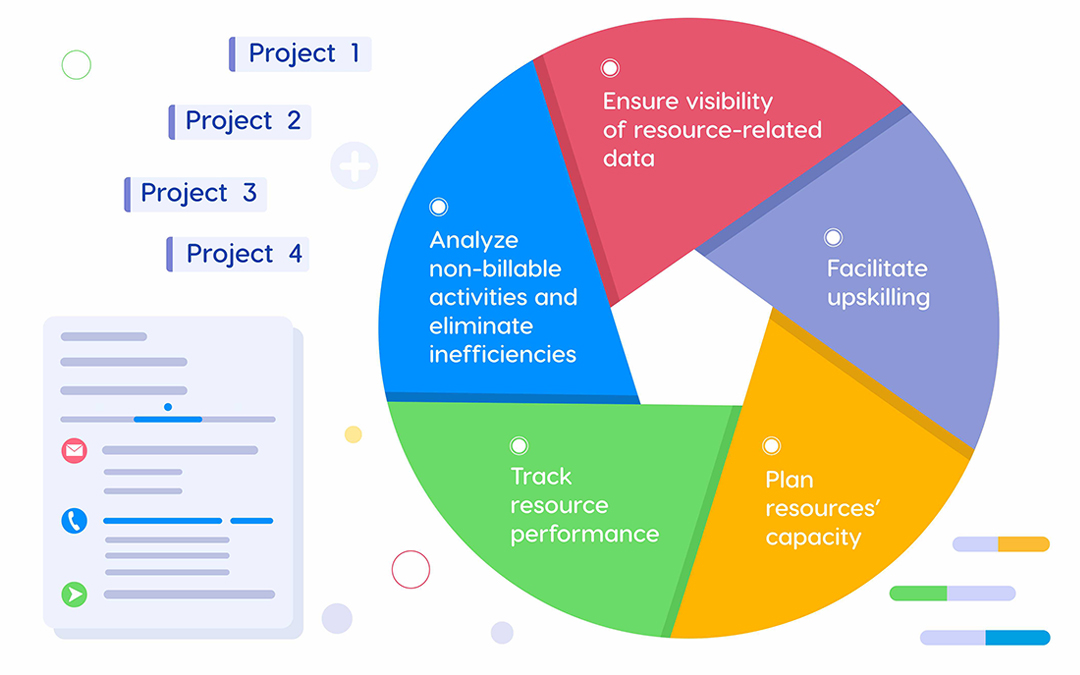
Ensure visibility of resource-related data
By resource-related data, we mean each team member’s competences, availability, capacity, and performance. Having this information at hand, you can assign resources to project tasks and track their performance more effectively, which will optimize their usage. It’s a good idea to select a resource management solution that provides visibility into all this data; we’ll discuss its capabilities later in the article.
Plan resources’ capacity
The next step is to identify upcoming projects’ demand for resources. Capacity planning helps you determine the number of employees you’ll need to staff upcoming projects and whether available resources can meet this demand. If there aren’t enough people for the identified needs, a resource manager must take measures to bridge this gap before a project starts. Therefore, resource capacity planning helps optimize resource utilization by ensuring that all projects running in a company are staffed with required employees and none of them is under- or overutilized.
Read more: Resource Capacity Planning: What, Why, and How
Track resource performance
Tracking resource performance can tell you a lot about the state of the workflow. The simplest thing is to monitor the amount of time team members actually spend on project-related tasks with what has been planned; it will give an idea of team members’ productivity. More advanced performance analysis will help identify bottlenecks (e.g., detect an overloaded resource group that blocks the completion of other groups’ work), which will also contribute to optimal resource utilization.
Facilitate upskilling
Changes in the business environment and rapidly developing technologies put forward new demands for employees’ skills. Training and upskilling contribute to the optimal utilization of the in-house resources – you won’t need to outsource people with specific skills for completing work while some of the project team members are underutilized. In addition, it increases the quality of project outcomes and optimizes project costs.
Analyze non-billable activities and eliminate inefficiencies
Finally, you should pay attention to the non-billable time. Aren’t there too many meetings the team members participate in? Aren’t they too long? Maybe the people have too much paperwork? A thorough analysis of employees’ non-billable time will let you spot inefficient or redundant activities that can be eliminated. As a result, the team members will have more time for billable work and their output will increase.
While resource utilization indicates how efficiently a company makes use of its resources, it’s no less important to track their overall performance. It’s much easier to analyze these things with the right resource management tool. As an example, let’s review the resource performance tracking capabilities of Epicflow, a multi-project resource management solution.
Tracking resource performance with a resource management tool: the Epicflow solution
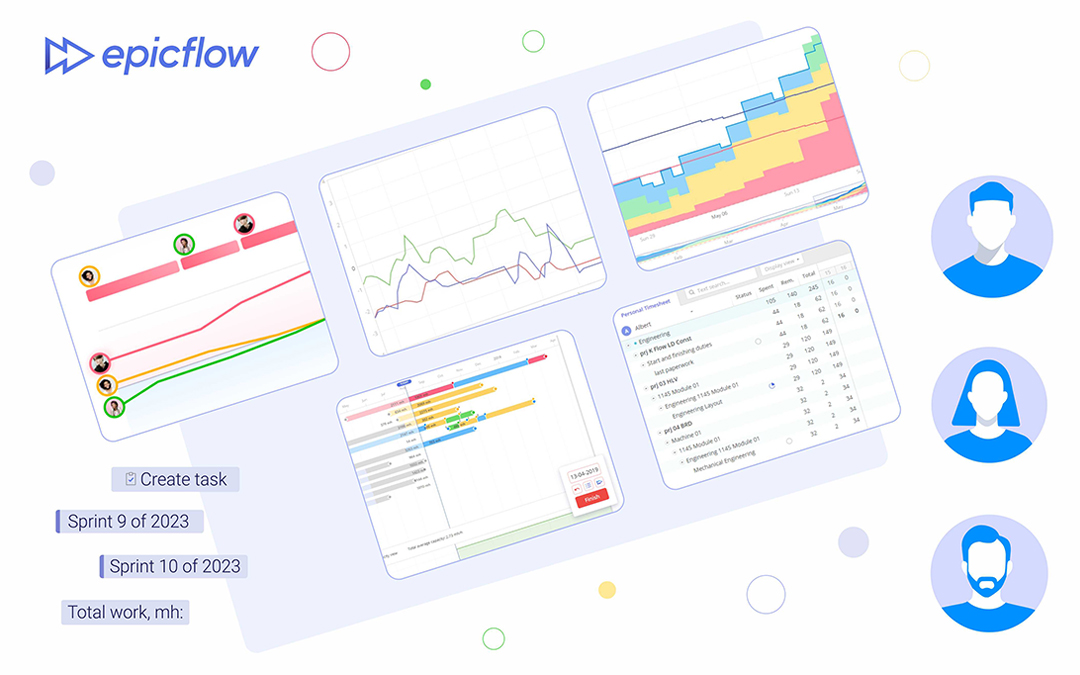
Epicflow was designed by researchers with about two decades’ experience in project management. It focuses on the efficient orchestration of multiple projects and wise management of their shared resources.
Based on their expertise and experience, Epicflow’s co-founders suggest a different approach to tracking performance than just calculating utilization, which involves switching from project to resource level. The state of projects is just a reflection of what has been going on at the resource level; monitoring resource performance can help a project manager timely detect bottlenecks that can negatively affect the flow with time. The other idea behind Epicflow is preventing people from overload which is the source of stress, burnout, bottlenecks, low productivity, and project delays.
Here are Epicflow’s capabilities that facilitate effective performance tracking and efficient utilization of resources in more detail.
Resource-related data visibility
Epicflow provides visibility into resource-related data: team members’ skills, capacity, and availability so that project managers can assign resources simply and effectively. As a result, they work on tasks that match their competences and have a workload that corresponds to their capacity, which contributes to high productivity and efficient utilization.
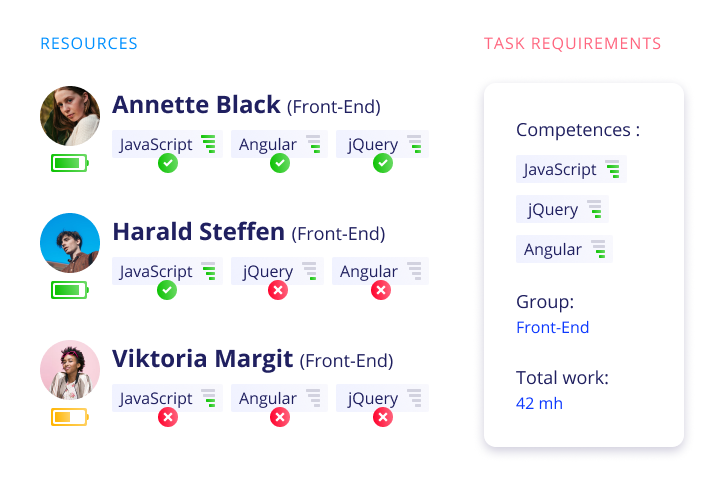
Effective resource planning
Epicflow’s Future Load Graph gives insight into resources’ capacity and workload in the future based on real-time and historical data, which allows project/resource managers to develop realistic and manageable plans for upcoming projects. In such a way you can make sure that the team members will cope with their work and be protected from the improper workload.
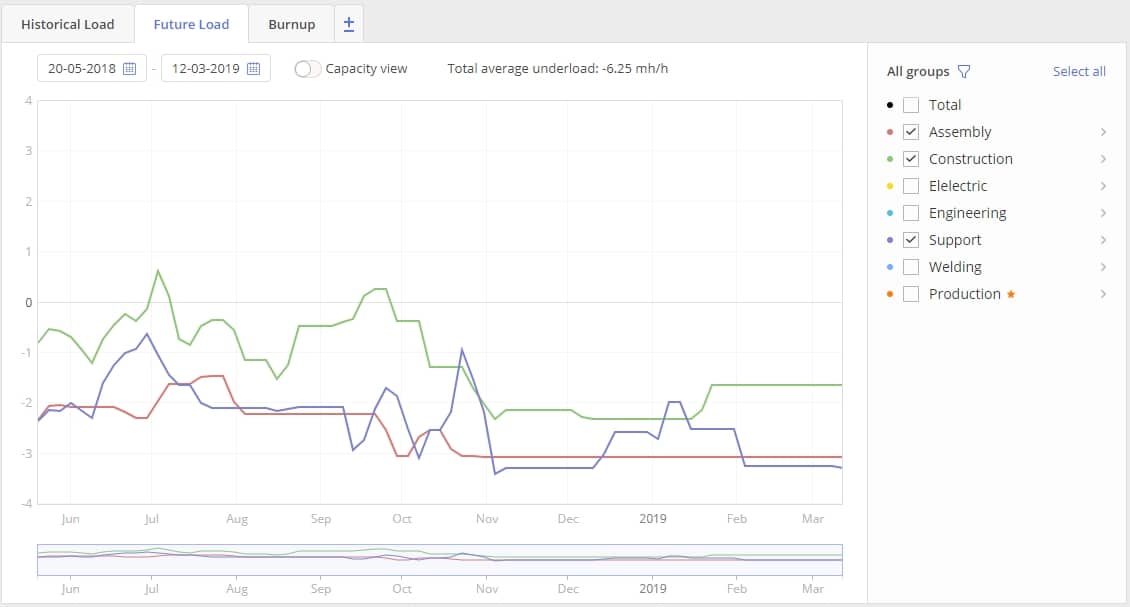
Tracking performance
In addition to tracking productivity by comparing the number of spent and remaining hours, Epicflow has a more advanced tool for performance assessment. You can find out the resource groups’ historical output in relation to their capacity in the Historical Load Graph. It helps detect the root causes of issues in the workflow in a matter of minutes. For example, if you notice reduced productivity, you can check this graph to find out whether it’s caused by one of the resource group’s overload.
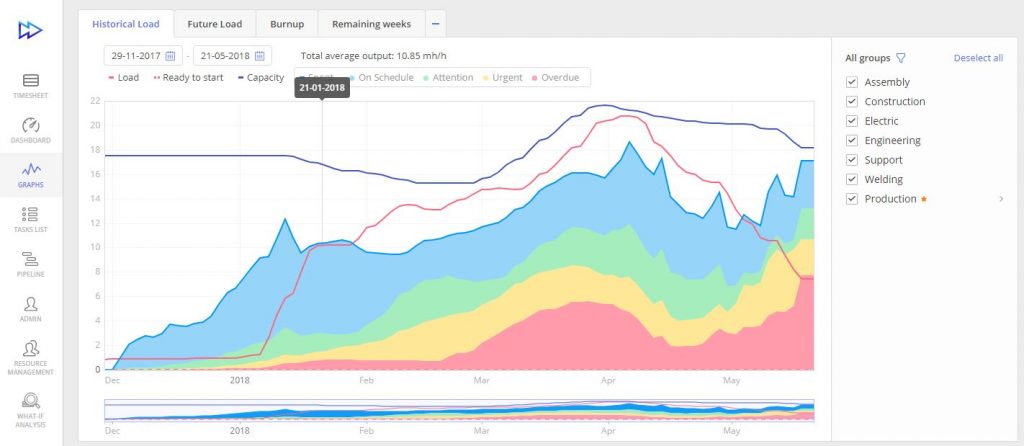
Resolving bottlenecks and improving decision-making
Whether you’ve detected a bottleneck and need to find the right way to resolve it or have to make other management decisions, the decision-making process is always accompanied by uncertainty. Epicflow’s What-if Analysis can help you reduce it by analyzing the effect of changes made to the project environment — you can run different scenarios, assess their impact, and choose the most reasonable solution.
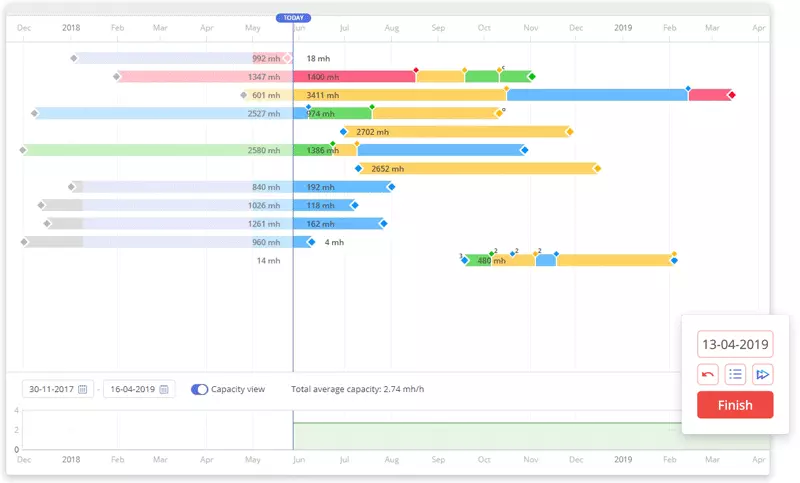
Therefore, with Epicflow’s approach to resource management, your resources will always be productive, efficiently utilized, deliver their work timely, and produce high-quality output. Want to learn how to achieve such results? Schedule a consultation with our expert.
References
- What Is Resource Utilization? Retrieved from: https://www.ibm.com/cloud/blog/what-is-resource-utilization

